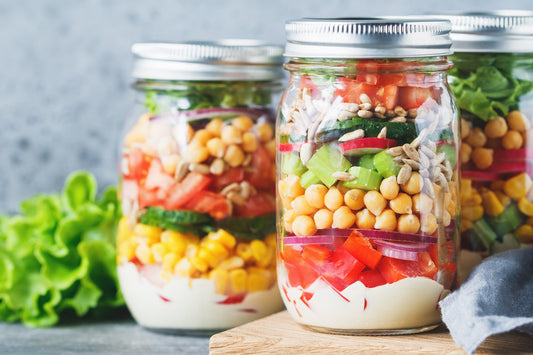When it comes to packaging, sealing is essential to keep products safe and fresh. Impulse sealers vs heat sealers are two popular methods used for this purpose. Both use heat to join materials together, but they work differently. This article will compare these two methods, helping you understand which one is best for your packaging needs.
- A Comparative Analysis of Vacuum Sealers vs. Heat Sealers
- Heat Seal Bag and Pouche: All Essentials to Know About
Impulse Sealers Overview
To understand the difference between impulse sealers vs heat seals, in this first section, let’s review about working principle, advantages and disadvantages of impulse sealers.
Impulse sealers are a popular choice for packaging applications due to their speed and versatility. They are particularly well-suited for sealing materials that require a quick and efficient sealing process.

Working Principle of Impulse Sealers
Impulse sealers utilize a pulse of heat to create a seal between two materials. This process involves applying pressure to the materials while simultaneously passing an electrical current through a heating element. The heat generated by the current softens the materials, allowing them to bond together under pressure. Once the desired heat is achieved, the current is interrupted, and the seal is formed.
Advantages of Impulse Sealers
- Fast sealing speed: Impulse sealers are capable of sealing materials quickly, making them suitable for high-volume production.
- Suitable for various materials: These sealers can be used with a wide range of materials, including plastic films, foil pouches, and other flexible materials.
- Low initial cost: Compared to some other sealing methods, impulse sealers often have a lower upfront cost.
Disadvantages of Impulse Sealers
- May not be ideal for thicker materials: Impulse sealers may not be as effective for sealing thicker materials or materials with uneven surfaces.
- Potential for uneven sealing: If not properly adjusted or used with care, impulse sealers can produce uneven or inconsistent seals.
Now, you’ve had the overview of impulse sealers, in the next part, let’s review heat sealers in different aspects to understant more about the difference between impusle sealers vs heat sealers.
Heat Seals Overview
Working Principle of Heat Seals
Heat sealers utilize a continuous heat source to create a secure bond between two materials. This process involves applying pressure to the materials while simultaneously heating a sealing bar or jaw. The heat softens the materials, allowing them to adhere to each other and form a strong seal. The heat is maintained until the desired seal is achieved, ensuring a consistent and reliable bond.

Advantages of Heat Seals
- More consistent sealing quality: Heat sealers typically provide a more consistent and reliable seal compared to impulse sealers, especially for thicker materials. The continuous heat application ensures that the materials are evenly heated and bonded together, resulting in a stronger and more durable seal.
- Can handle thicker materials: These sealers are well-suited for sealing thicker materials, such as plastic bags or pouches filled with products. The continuous heat allows for deeper penetration into the materials, creating a strong and reliable seal even for thicker substrates.
- Suitable for large-scale production: Heat sealers are often used in high-volume production environments due to their ability to handle large quantities of materials. The continuous heat application allows for efficient and consistent sealing, making heat sealers ideal for high-throughput operations.
Disadvantages of Heat Seals
- Slower sealing speed: Compared to impulse sealers, heat sealers generally have a slower sealing speed. The continuous heating process requires more time to achieve the desired seal temperature, which can impact production efficiency.
- Higher initial cost: Heat sealers often have a higher initial cost than impulse sealers, especially for industrial-grade models. The investment in a heat sealer can be significant, but it can be justified by the benefits of improved sealing quality and suitability for demanding applications.
The Difference Between Impulse Sealers vs. Heat Seals
In this section, we will go deeper to the difference between impulse sealers vs heat seals in the aspect including material compatibility, sealing speed, sealing quality, cost and maintenance.
Comparing Material Compatibility Between Impulse Sealers vs. Heat Seals
- Impulse sealers:
- Excel at sealing thinner materials like plastic films and foil pouches.
- Can handle a variety of materials, including paper, but may not be as effective for thicker or more textured materials.
- Ideal for applications like food packaging, pharmaceutical packaging, and retail product packaging.
- Heat sealers:
- Designed to handle thicker materials, such as laminated films, pouches with multiple layers, and materials with uneven surfaces.
- Offer excellent sealing quality for applications requiring durability and strength.
- Commonly used in industries like food packaging, medical device packaging, and industrial product packaging.
Comparing Sealing Speed Between Impulse Sealers vs. Heat Seals
- Impulse sealers:
- Known for their high sealing speed, making them suitable for large-scale production.
- Can process multiple packages quickly, reducing production time and increasing efficiency.
- Ideal for applications where speed is a critical factor, such as food manufacturing and e-commerce fulfillment.
- Heat sealers:
- Generally slower than impulse sealers, especially when sealing thicker materials.
- Offer a more controlled sealing process, which can be beneficial for ensuring consistent quality and preventing material damage.
- Suitable for applications where sealing quality is more important than speed, such as pharmaceutical packaging and medical device packaging.
Comparing Sealing Quality Between Impulse Sealers vs. Heat Seals
- Impulse sealers:
- Can produce high-quality seals, but the consistency may vary depending on factors like material thickness, operator skill, and machine settings.
- Suitable for applications where a good seal is important, but not necessarily critical.
- Heat sealers:
- Typically offer more consistent and reliable seals, especially for thicker materials.
- Provide a more controlled heating process, which helps to ensure optimal material bonding.
- Ideal for applications where a high level of sealing quality is essential, such as food packaging and medical device packaging.
Comparing Cost Between Impulse Sealers vs. Heat Seals
- Impulse sealers:
- Generally have lower initial investment costs, making them a more affordable option for smaller businesses or those with limited budgets.
- Ongoing operating costs can vary depending on factors like energy consumption, maintenance requirements, and the specific model.
- Heat sealers:
- Typically have higher initial investment costs, but can offer long-term cost savings due to their durability and consistent performance.
- Ongoing operating costs may be lower in the long run due to their ability to handle thicker materials and reduce waste.
Comparing Maintenance Between Impulse Sealers vs. Heat Seals
- Impulse sealers:
- Require regular maintenance, including cleaning, lubrication, and replacement of heating elements.
- Maintenance costs can vary depending on the specific model and frequency of use.
- Heat sealers:
- May require more frequent maintenance, especially for models with complex heating systems or rollers.
- Maintenance costs can be higher due to the need for specialized tools and equipment.
Here is the summarizing the difference between impulse sealers vs heat seals:
|
Feature |
Impulse Sealers |
Heat Sealers |
|
Material |
Thinner materials |
Thicker materials |
|
Speed |
Faster |
Slower |
|
Quality |
Good, but can vary |
More consistent |
|
Cost |
Lower upfront cost |
Higher upfront cost |
|
Maintenance |
Easier |
More complex |
Theses differences can help you choose the best tool for your needs.
Choose impulse sealers for:
- High-volume production
- Sealing thin materials like plastic films
- Need for speed
Choose heat sealers for:
- Sealing thicker materials
- Consistent sealing quality
- Applications where durability is important
Conclusion
In conclusion, impulse sealers are ideal for sealing thin materials quickly and efficiently, while heat sealers are better suited for thicker materials and applications requiring consistent sealing quality. Businesses should carefully consider their specific packaging needs to determine which sealing method is best for their operations.









